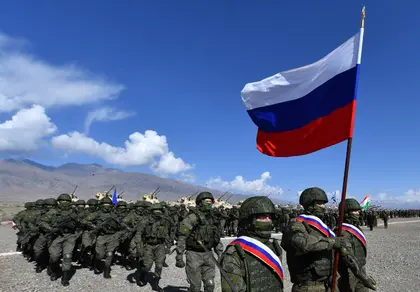German far-right and far-left Bundestag members boycotted an address to the German legislature Tuesday by Ukrainian President Volodymyr Zelensky, who earlier had warned that pro-Russian rhetoric threatened EU nations, AFP reports.
Zelensky’s address came at the start of a diplomatic tour to shore up support for his nation’s fight against the full-scale invasion begun in February 2022 on the orders of Russian President Vladimir Putin.
JOIN US ON TELEGRAM
Follow our coverage of the war on the @Kyivpost_official.
In an illustration of the increasing headwind Kyiv faces to obtain backing, lawmakers from Germany’s far-right AfD and far-left BSW parties boycotted Zelensky’s address to parliament. Both extremist parties garnered the most votes in the areas once part of East Germany before its reunification, where Putin spent his formative years as a KGB operative.
Both extremist parties made substantial gains in Sunday’s EU parliamentary elections, with the AfD scoring higher than all three parties in Chancellor Olaf Scholz’s coalition. Meanwhile, the BSW, a newcomer that campaigned against weapon deliveries to Ukraine, took just over six percent, AFP reports.
Zelensky said these extremist and pro-Kremlin parties pose a threat that stretched beyond Ukraine to endanger democracies across Europe.
“It seems to me that the most important thing is that people did not choose pro-Russian populist rhetoric. But radical pro-Russian rhetoric is dangerous for your countries,” Zelensky warned at a press conference before his Bundestag address.

‘The Holy Grail of American Elections’ – Ukraine at War Update for Nov. 5
The co-leaders of the AfD said they “refused to listen to a speaker wearing camouflage fatigues.”
“Ukraine does not need a war president now, it needs a peace president who is ready to negotiate,” said Tino Chrupalla and Alice Weidel, adding that AfD lawmakers had therefore decided to leave their seats empty at the Bundestag on Tuesday.
While the far-right parties are still a minority, the growing size of their apparent support and this past weekend’s gains in EU parliamentary elections have triggered fears over the future of Western backing for Ukraine.
NATO Secretary General meets Hungary’s Prime Minister
NATO chief Jens Stoltenberg is to meet Hungarian Prime Minister Viktor Orban in Budapest on Wednesday amid tensions between the central European country and the defense alliance over Russia’s invasion of Ukraine, AFP reports.
As Moscow’s closest EU ally despite its invasion of Ukraine, Orban is increasingly stoking fears of a war between the West and Russia, which he blames on Brussels and NATO, in which his country is currently a member, wielding potential veto power in granting membership in the alliance to Ukraine.
The nationalist prime minister has recently suggested that he would like to “redefine” the position of Hungary in the alliance to prevent any participation in operations “outside NATO territory.”
Stoltenberg, who has been touring NATO members, is trying to hammer out a plan to be announced at a summit in Washington next month for NATO to play a bigger role in coordinating weapons deliveries and training for Kyiv’s forces.
Hungary has objected, claiming it could drag the alliance into the war with Russia. It has already refused to supply arms to Ukraine.
NATO officials and diplomats say that Hungary – one of the NATO countries closest to the Kremlin – is being offered an “opt-out” that would mean Hungary would not be required to participate in any way.
Hungary would also likely be left on the sidelines of efforts by Stoltenberg to get NATO members to pledge to keep supplying at least support worth €40 billion ($43 billion) a year to Ukraine for as long as it takes.
Ukrainian sea drones penetrate Russian Navy’s Sea of Azov safe haven
Most of the elements of Russia’s once-mighty Black Sea Fleet (BSF) that are still afloat recently abandoned their blue water operations for the Sea of Azov. Now Kyiv’s relentless campaign to find and sink Russian warships has already reached those enclosed and once-safe waters.
Kremlin naval officials last week ordered practically all major warships operating in the Black Sea area to congregate in the Sea of Azov, in waters south of the occupied Ukrainian port cities of Mariupol and Berdyansk for “exercises.”
The area is normally difficult for big vessels to operate in because of constricting shores nearby, shallow water depths and shifting seabed.
The waters of the northeast Sea of Azov are, however, about as far as possible for a BSF warship to distance itself from the main weapons used by Kyiv’s forces to attack Russian naval vessels – kamikaze unmanned seaborne vessels (USV) drones and precision-guided anti-ship missiles particularly the Storm Shadow and SCALP sent to Ukraine from Britain and France.
According to open-source reports, the Kremlin concentrated as many as 5 amphibious assault ships, 12 surface combatant vessels, and escorts, for its latest fleet maneuvers. Ukrainian partisan groups reported the first Russian warships left the BSF’s now little-used main base of Sevastopol on May 31, and vessels also moved from the ports of Feodosia, Chornomorske, and Novorossiysk in Russia.
Russian state media documented Ukrainian attempts to attack BSF vessels operating in the Black Sea in the lead-up to the training. At least one attack was foiled by Russian Air Force helicopters that intercepted and destroyed USV attempting to pass through the Strait and break into the Sea of Azov with video showing the door gunner of a KA-27 helicopter detonating the drone’s warhead in a spectacular explosion.
You can also highlight the text and press Ctrl + Enter






